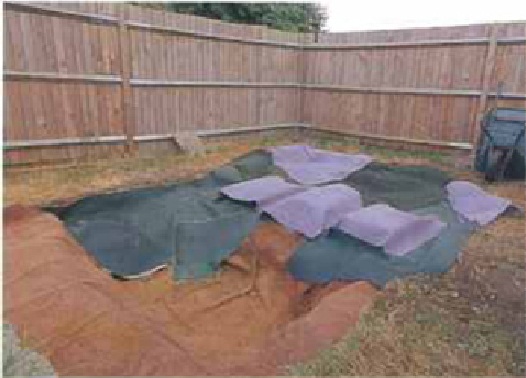The magnificent pool that is the key feature to Hayman Island
was part of a refurbishment project. The pool is equal in size to 7
Olympic sized pools, and is the largest in swimming pool in the southern
hemisphere. This luxurious pool forms part of the pool wing where
visitors staying in the pool rooms can have direct access to the pool.
The pool was recently part of a major renovation and rebranding effort at
Hayman Island Swimming Pool, being rebranded as a “One and Only” resort.
Fabric Solutions were selected in October
2013 to undertake the complex relining of the pool with a special heavy
duty scrim reinforced swimming pool liner.
Because of the immense size of the
project there were many complex hurdles that needed to overcome to
deliver what the resort wanted in the time line required. These
included:
- The sheer size of the pool.
- The complex shape due to it being integrated with some of the resort accommodation plus a large central island.
- The resort is in the Whitsundays which is subtropical and subject to
wet weather. Never a good proposition when all of the installation
works needed to be done outside. Rain and wind can play havoc with
installation.
- Very tight time line for completion.
- Working with and around other trades also involved in the renovation of the resort.
The initial step was to do a full survey
of the pool to work out the shape and size of the pool liner needed.
Mark Stewart of All Terrain Surveys was engaged to go to Hayman Island
to do this. This was a little problematic as the pool was full as the
resort was still operating at this time (closed 15th January 2014).

Around
3 days was needed to survey the entire pool, after which the data was
processed using state of the art software so that the pool liner could
be shaped and designed.
The liner was manufactured in 10 large
sections at Fabric Solutions’ Yatala factory which is then installed and
sealed on site. The liner is manufactured in order to reduce the time
on site and reduce the potential for weather interruptions.
Once the pool liner sections are shipped,
at the same time the first group of installers leave to meet the semi
trailer at Airlie Beech to catch the dedicated barge to Hayman Island.
Preparation work is the first job on the list, with some concrete work
and cutting a grove into the concrete structure to fix the top of the
liner into, used to create the below water seal.
The weather was not kind and most days
there was some rain. On one occasion, it rained for 3 days and this put
around 150,000 litres of rain water into the pool. All that can be done
is to hook up the pumps and then dry off the liner and keep going. This
particular storm cost the team around 5 days in lost time. I guess this
goes with the territory when you are working on a project in the open.
4.5 weeks after starting, we finally had
all the sections joined and secured into the sealing groove at the top.
Now, it was time to fill the pool. The pool volume is around 8.5 million
litres, so it was decided to fill direct form the ocean. This in itself
created issues as the large pumps brought in to do the filling could
only pump during high tide as the suction pipes of the pumps were high
and dry during low tide. After 2.5 days of high tide only filling and
the pool was full.
It was time for the project weary install
crew to pack up and head back to Brisbane. Another commercial liner
install project completed on time, on budget and on spec by Fabric
Solutions Australia.
 Many people consider using pool covers
for their inground or above ground pool (or spa) as it increases the
value and return on your investment. When your pool cover is fitted, make sure the pool size is measured
properly and the cover cut in properly so there are no gaps. It is
common to make a pool cover up to 75 mm larger on each side so it forms a
lip around the entire edge. Gaps in the edging will reduce the overall
efficiency that the pool cover can offer.
Many people consider using pool covers
for their inground or above ground pool (or spa) as it increases the
value and return on your investment. When your pool cover is fitted, make sure the pool size is measured
properly and the cover cut in properly so there are no gaps. It is
common to make a pool cover up to 75 mm larger on each side so it forms a
lip around the entire edge. Gaps in the edging will reduce the overall
efficiency that the pool cover can offer.



















